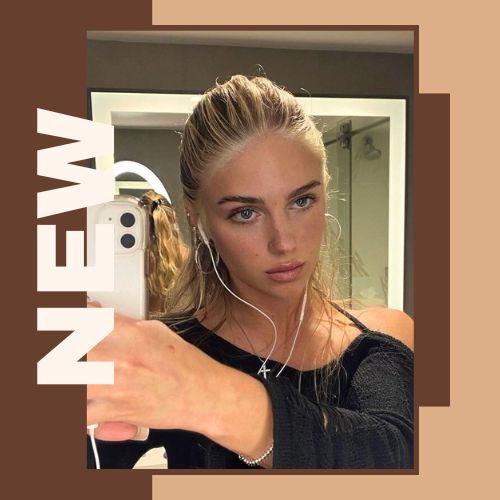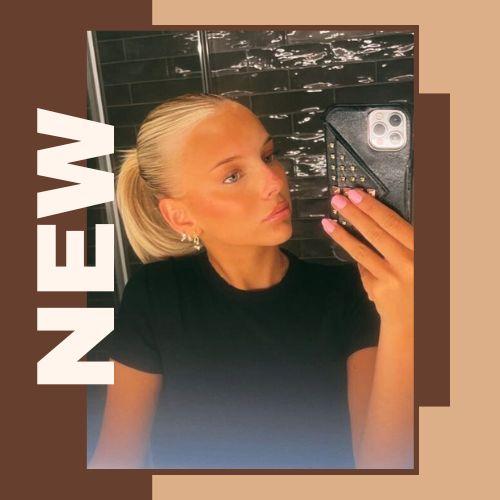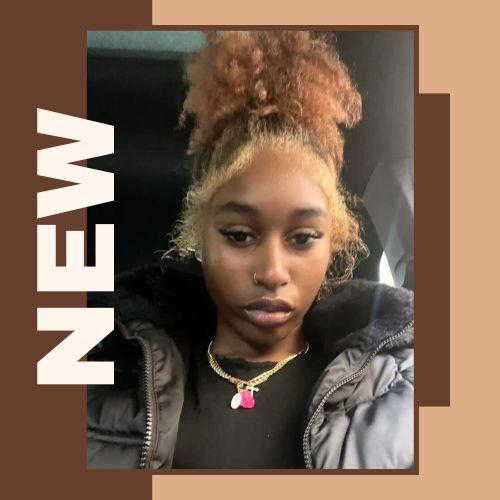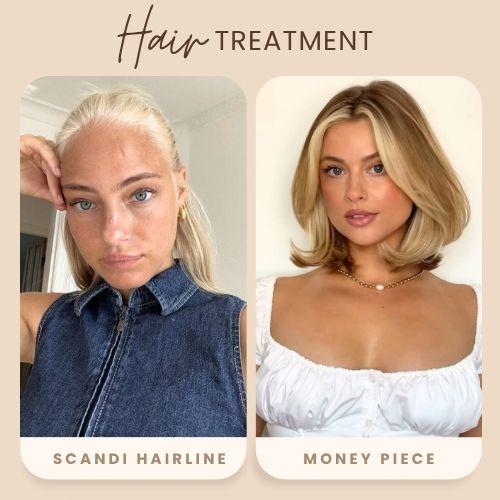Social media is buzzing about the “Scandinavian hairline” – a subtle face-framing highlight trick that gives a natural sun-kissed glow. Instead of full-head highlights, this technique lightens just the tiny baby hairs around your forehead, creating a soft “halo” of brightness. It’s been spotted on TikTok and Instagram so often that the hashtag has tens of millions of views. In the sections below, we’ll explain exactly what a Scandi hairline is and everything you want to know.

Source: Pinterest
What Is a Scandinavian Hairline?
A Scandinavian (Scandi) hairline isn’t a cut at all but a highlighting technique. The stylist hand-paints bleach or lightener onto the very front strands and baby hairs along your forehead, usually only a shade or two lighter than your base color. This subtle coloring frames the face – think of it as a delicate ribbon of light at the hair’s edge. The result is a soft, face-brightening halo effect.
Styling-wise, the goal is a seamless blend, not a chunky stripe. In fact, celebrity stylists describe it as much finer than a traditional highlight – a delicate boost rather than a bold streak.
Why Is It Called a Scandinavian Hairline

Source: Pinterest
The name comes from Nordic blondes – Scandinavians often get very pale, bright roots from the sun – and this look mimics that effortless brightness. In other words, it makes your hair look like it naturally lightened in the sun, just around your face.
How to Get a Scandinavian Hairline
Getting this look usually means a trip to a professional colorist. A skilled stylist will customize the process for your hair color and texture. In general, here’s what to expect:
★ Consult a colorist. Describe that you want the Scandi hairline (sometimes called “hairline highlights”) and show photos. Your stylist will assess your hair’s level and whether you need pre-lightening (they often prefer starting on hair that’s already around a level 7 or lighter to avoid brassiness).
★ Section off the front hair. The stylist will comb or brush the baby hairs at your forehead forward so they’re easy to reach. They will isolate a narrow strip right at the front of your hairline.
★ Apply the bleach. Instead of foils, most colorists freehand-paint the lightener directly onto those baby hairs and the roots along the hairline. Because these hairs are so fine, they lift very quickly – often around 20–30 minutes total.
★ Rinse and tone. Once the lightener has lifted to the desired brightness, it’s rinsed out. The stylist may apply a toner or gloss to ensure the newly lightened hairs blend naturally with the rest of your hair color.
★ Protect your skin. Since bleach can irritate, pros will often place a protective barrier cream on your skin or carefully avoid contact. This keeps the chemicals off your forehead and scalp.

Source: Pinterest
After just a short salon visit, you’ll emerge with that sunlit hairline. Even if your hair is darker, your colorist can adjust the shade a few levels lighter and use techniques like shadow roots or a follow-up face-framing highlight to keep the look soft.
FAQs About the Scandi Hairline
Is the Scandi Hairline Safe?
It can be, but with caution. Since the bleach is applied really close to your face, there can be some risk. Bleach contains strong chemicals, and if it accidentally touches your skin—especially around the forehead or scalp—it might cause irritation, redness, or even a mild burn. Also, those soft little baby hairs along your hairline are already quite delicate. If this technique is overused or done too often, it can lead to breakage or thinning around the edges.
In practice, professionals take precautions: they may apply a barrier cream on their skin and paint the bleach with precision. Importantly, leaving this to a salon generally keeps it safe and avoids mishaps like eye exposure or uneven color.
How Much Does a Scandinavian Hairline Cost?
Prices vary by region and salon, but it is often cheaper than full highlights. According to industry sources, the initial service typically runs on the order of $50–$100 in the U.S.. You should also budget for regular touch-ups (usually every 6–8 or 10–12 weeks) to keep the hairline bright.
What’s the Difference Between a Scandi Hairline and a Money Piece?

They’re related ideas, but not the same thing. A money piece is a chunky face-framing highlight (often a wider, shinier streak of blonde on either side of the face) that was popular in Y2K-inspired trends. It’s typically done with foil and is much bolder. By contrast, a Scandi hairline is subtler and painted directly at the roots. Also, because it’s so understated, a Scandi hairline is generally lower-maintenance – it grows out looking more natural and doesn’t show obvious regrowth like a thick highlight might.
Conclusion
The Scandinavian hairline is a fun little glow-up—subtle, fresh, and perfect for adding light around the face. Of course, like with any trend, there are a few laughs along the way—some folks joked that the extra brightness made their foreheads look a little more… spacious than expected. If you’re curious, just chat with your colorist—they’ll know how to tailor it to your features and make it work with your face, not against it. Happy hair day!










